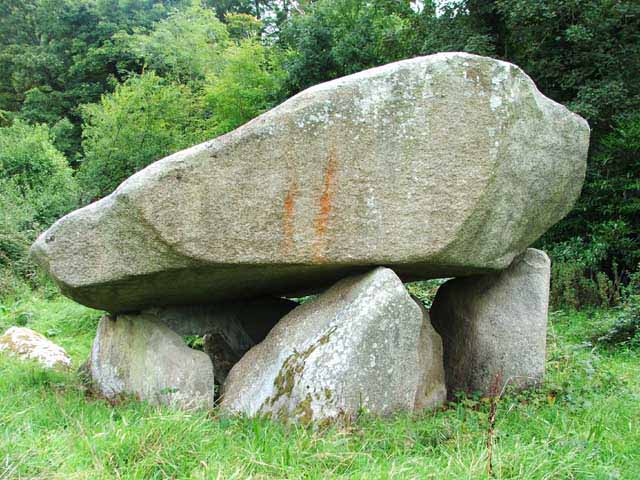Prehistory

The county was first inhabited after the last Ice Age towards the end of the Mesolithic period. Sometime around 5,000-3,300 BC, along the coast, rivers and streams, the first pioneers of hunters and fishers entered the area. The distinctive flint tools known as “Bann flakes” at sites such as Dalkey Island, Dún Laoghaire and Loughlinstown provide evidence of their passing. The earliest settlers gradually shifted to a Neolithic farming culture of raising animals and growing cereal-crops. This necessitated the clearance of forest and the establishment of fixed settlements with houses and field systems. Stone axes have been found at Blackrock, Dundrum, Monkstown and Dún Laoghaire.
Field-monuments from this time show a new cult of the dead. These Megalithic tombs are of various types; The Portal tomb (or, ‘dolmen’) associated with Neolithic communal burial sites such as at Kilternan, gave way to the individualist styles with associated burial goods, such as the Wedge tomb (Ballyedmondduff, Shankill), and Cist burial (Stillorgan Park, Deansgrange, Edmondstown) following the introduction of metal. Those remaining can be found chiefly on higher ground in the south and west of the county.
The making of metal from rock to manufacture new artefacts (tools, ornaments and weapons), was a technological leap in skills. Amongst the many finds are those of a copper axe found in Cabinteely, a copper-alloy spear-head at Rathmichael, bronze axes at Stillorgan, Ticknock, and a penannular gold bracelet at Monkstown.
The Iron Age (600 BC to 400AD) in Ireland is generally an obscure period of pre-history. A hillfort and associated spearpoint at Rathmichael indicate a political centre in the Dún Laoghaire-Rathdown region. Numerous standing stones for this and earlier times dot the landscape, such as at Cabinteely, Newtown and the “Queen Mab” stone in Glencullen.
The late prehistoric rural and tribal society of Ireland continued through the Iron Age and into the early medieval period. The coming of Christianity in the 5th century saw a shift in the development of the built heritage to monastic sites and churches often on established sites. Rathmicheal became an important ecclesiastical site, with a round tower unique to the area, as the hillfort had been before it. Dún Laoghaire-Rathdown was part of the kingdom of Laighin (Leinster), and represented part of the tuath of Cuala, which covered an area of the Dublin and Wicklow mountains, and the adjacent coast.












